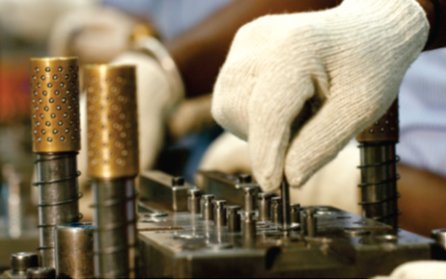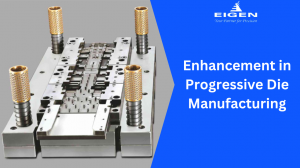Taking A Close Look At Stamping Die in Manufacturing
- Precision Metal Stamping |
- Mar 5, 2019
A Die is called the female part for the entire process of sheet metal stamping. Stamping dies are unique precision metal stamping tools. The cutting and forming sections of the die are made out of hardened steel which is called tool steel. These sections could also be made of carbide or other wear-resistant materials. In the manufacturing process metal stamping dies are used to cut, forge or form sheet metal into the required shape or profile.
The operations of metal stamping dies are called cold-forming operations because the dies are not induced with heat. But because of friction, a certain heat is generated. And so the component might be hot when it is ejected out of the stamping die. Manufacturers make a variety of things using the stamping die. They could range from a paper clip to parts of a huge aircraft. This also would mean that the size of the stamping die varies greatly. It could be so tiny that it could fit in the palm of your hand or could be big enough to make an automobile’s entire body.

A component thus produced by the stamping die is called a ‘piece part.’ Certain metal stamping dies are able to produce more than one ‘piece part’ for each cycle. They can also deliver 1500 strokes for each of that cycle. What enables these dies is the force from the press.
Stamping die variants
The stamping dies to vary greatly. Although they are customized according to the component they need to create, they perform all perform the basic function of cutting and forming or perhaps both functions. There are line dies that are either loaded manually or robotically, but the transfer dies and progressive dies are fully automated.
Zooming in on the kinds of stamping die
Simple die:
when a die is designed to perform one single operation at one stage in one stroke then it is called a simple die.
Compound die:
At one stage when a dies performs more than one cutting operation with just one stroke then it is called compound die. Production rate increases with this kind of a die because it can produce one entire component in just one stroke.
Progressive die:
As the name itself suggests, as the metal progresses from one stage to another, the cutting operation is performed with one stroke but at different stages. The production rate is the same as the compound die because this also produces a component with one stroke. In this variant designing the metal stamping dies is much easier because the operation is performed at different stages.
Transfer die:
This type of stamping die is quite similar to that of a progressive die, except for the fact that the blanking is done at the beginning of the process, not at the end.
Combination die:
At one stroke and at one stage if the die is designed to perform a combined action of cutting and forming then it is termed as a combination die.
Multiple dies:
The name is self-explanatory. When a stamping die is designed with more than one die and they are arranged in parallel to produce more components then it is called a multiple dies.
How soon does a die, die away (or what is the life of a die) in the process of precision metal stamping?
For a fact, the die has nine lives so to speak. Maintenance and the material has a bearing on the life of a metal stamping die. Among the many factors that affect the metal stamping die is the material used to make the component. The harder the material the lesser the life of the stamping die. Another significant factor is the material of the metal stamping die itself. Solid carbide tooling tends to last longer than conventional tool steel. Also, the larger and studier tooling adds life to the die.
Metal stamping dies are at the heart of the precision metal stamping process. They make the process cost-effective and fast. More and more industries are relying on the products of precision metal stamping. Surely, maintaining the metal stamping dies will help the manufacturers to produce good quality components with great precision. Also, it is likely to increase the life of the stamping die.
Ujjwal handles crucial roles like AGM Marketing, researcher, and is an author for KDDL – Eigen. He currently works with Eigen for implementing proven techniques and strategies for marketing plans on online and offline platforms. An expert in efficiently executing SEO, SEM, email marketing, social media marketing, PR marketing, Print campaigns, etc. Ujjwal has coordinated an efficient marketing team on various creative campaigns and programmatic buying to support various digital cross-promotion efforts. Implement efficient search optimization strategies with the help of collateral material and metrics.
In his former years, Ujjwal has years of experience in a managerial role for several reputed companies. His years of experience combined with the flair of writing help him come up with result oriented strategies for Eigen.




